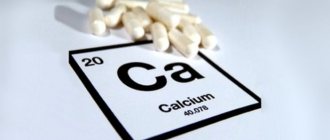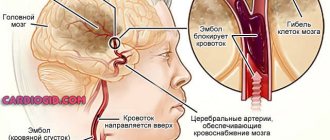Many people know that a cholesterol test is performed to diagnose lipid metabolism disorders and to assess the risk of developing a disease such as atherosclerosis. However, most do not have answers to these questions:
- Should this organic compound be present in the human body?
- In any quantity?
- Are the rates the same for men and women?
- Do cholesterol levels in women depend on hormone levels?
- What happens if the value is higher than normal or, conversely, lower?
And this is not the entire list of what a woman might think about when she hears about a cholesterol test. If questions arise, they should be asked to the appropriate specialist. But if this is not possible at the moment, then you can study at least basic information.
What is cholesterol
This is a type of lipid present in the structure of human and animal cells. 20% of it comes from food, and the bulk is synthesized by the body itself. At normal concentrations, this substance is not harmful, but even necessary, because it:
- strengthens cell membranes;
- promotes digestion;
- participates in the formation of sex hormones;
- stimulates the production of vitamin D;
- protects nerve fibers;
- reduces cell permeability.
Cholesterol is present in the body at any age. It is required for survival and cannot be replaced by anything. However, we often hear this substance mentioned in a negative context. This is a misconception, since only one type of it causes harm. It is important to distinguish them.
Cholesterol: main functions
Cholesterol is a substance without which normal metabolic processes in the body are impossible. In other words, it is vital, because without it:
- Certain hormones and vitamin D will not be produced;
- normal production of bile acids is impossible;
- renewal and construction of cell membranes is impossible.
That is, it is impossible to talk about the absolute harm of cholesterol for the body. This is the same as talking, for example, about the dangers of oxygen.
Good and bad cholesterol
In everyday life, good is called high-density lipoprotein, and bad is low-density lipoprotein. Lipoprotein is cholesterol in a protein shell made of apolipoprotein.
High density means that there is little cholesterol in the compound itself: the bulk is protein. In this ratio, lipid transport is facilitated. It enters the liver and is excreted with bile, without settling anywhere. That's why he is considered good.
Low-density lipoprotein, on the other hand, is predominantly composed of cholesterol. Its removal from the body is difficult. This is the type that is considered bad. It lingers in vascular cells and causes atherosclerosis. In addition, it tends to accumulate with age. An adult has much more of it than a child.
Numbers for different age categories
With age, the concentration of cholesterol in the blood gradually increases. This is associated with a slowdown in metabolic rate and the emergence of chronic diseases. The older a woman is, the higher her cholesterol level. This indicator is influenced by heredity, lifestyle, nutrition, excess weight, thyroid pathologies, liver and kidney diseases, and taking hormonal medications.
Characteristics of lipoprotein indicators in the blood by woman’s age:
Causes of increased blood cholesterol in women
- Between the ages of 20 and 30, a woman's cholesterol level rarely rises above normal. Even if this is observed, it is the result of endocrine disorders, hereditary predisposition, or caused by taking hormonal oral contraceptives.
- After 40 years, a woman’s body undergoes changes, reproductive function decreases, and hormonal balance changes. Such transformations cause an increase in cholesterol levels.
- After 50 years, most women begin menopause. The daily cholesterol level increases significantly at this time. Doctors recommend taking a biochemical blood test to determine lipoprotein levels 2 times a year. LDL does not change significantly at age 51.
- At the age of 60, chronic diseases appear; many women suffer from impaired functioning of the thyroid gland and arterial hypertension. All this contributes to increasing cholesterol levels. After 60 years, cholesterol should be under control. According to statistics, in this age group the level of lipoproteins is elevated in 60% of women.
- After 65 years, the level of this indicator is also prone to a slight decrease.
The concentration of lipoproteins in the blood can be determined by a blood test. A biochemical study of the fluid will reveal the level of total cholesterol, high and low density lipoproteins, as well as triglycerides and the atherogenicity coefficient. To obtain reliable results, it is necessary to properly prepare for the analysis.
So, it is advisable to donate blood in the morning on an empty stomach. Biological material is taken from a vein. Before collecting it you must:
- Do not drink alcohol for at least 2 days.
- take the test on an empty stomach. You can only drink plain water.
- Do not smoke immediately before donating blood;
- eliminate stress loads.
A separate indicator of total cholesterol is not informative. It is important to identify the level of low and high density lipoproteins. If an increase is detected, it is recommended to take measures to normalize the indicators.
Although with age, the norm of lipoproteins in women is slightly higher than for men, but in the fairer sex this substance is less likely to be deposited on the walls of blood vessels compared to the stronger sex. This fact is explained by the protective properties of female hormones.
Treatment includes: reducing the consumption of fatty foods, increasing the amount of fiber and omega-3 fatty acids in the diet, drinking at least 2 liters of water per day. And it is also important to change your lifestyle, include daily feasible physical activity, and give up alcohol and smoking. If this does not help, medications are prescribed.
As women age, there is a tendency for cholesterol to increase
Blood cholesterol levels in men and women by age
Over the years, indicators that can be considered normal change. The meanings are not the same for men and women. Here is a table that will help you avoid getting confused and keep your health under control.
| Age | Norm of total cholesterol (mmol/l) | |||
| Women | Men | |||
| Minimum | Maximum | Minimum | Maximum | |
| 20-30 years | 3,16 | 5,75 | 3,16 | 6,32 |
| 30-40 years | 3,37 | 6,27 | 3,57 | 6,99 |
| 40-50 years | 3,81 | 6,86 | 3,91 | 7,15 |
| 50-60 years | 4,20 | 7,77 | 4,09 | 7,15 |
| 60-70 years | 4,45 | 7,85 | 4,12 | 7,10 |
| 71 years and older | 4,48 | 7,25 | 3,73 | 6,86 |
A common myth is that you need to start tracking your cholesterol levels closer to retirement age. This is a big misconception. Doctors recommend donating blood for the first time at the age of 25. The unhealthy lifestyle of modern youth contributes to a more active accumulation of low-density lipoproteins, which is why heart disease increases in age.
When should you start monitoring your cholesterol?
It's never too early for prevention. It’s better to get used to monitoring your health from a young age, then it will present you with fewer unpleasant surprises. It is especially important to pay attention to your health after 40 years of age
, this is true for both men and women. In men, coronary heart disease may begin to develop earlier than in women. This is explained by hormonal levels. Women of childbearing age have more “good” cholesterol in their bodies, while in men the preponderance may lean toward “bad” cholesterol. After menopause, women's bad cholesterol levels may also begin to rise along with their triglyceride levels.
If previously it was believed that atherosclerosis mainly affects mature and elderly people, now the disease is diagnosed in younger patients, so it would be reasonable to start controlling cholesterol levels at 30-35 years of age. If the analysis shows that everything is normal, a re-check can be carried out after 3-4 years, but if the cholesterol level is elevated or there is a genetic predisposition to the development of heart and vascular diseases, then it is worth checking the cholesterol level more often.
Do children suffer from high cholesterol?
Cholesterol levels in children, as a rule, do not rise above normal, but they can also be at risk if hereditary hypercholesterolemia is found in their family. In this case, the child will be registered with a pediatric cardiologist from an early age. A cholesterol test should be done at the age of two years, and then repeated periodically.
Why is lipid metabolism disrupted in the body?
Lipid metabolism is a complex metabolic process. An important part is cholesterol metabolism. Its disorders are one of the main causes of cardiovascular diseases.
The disorder can occur for various reasons:
- heredity (in this case, the first symptoms appear in childhood);
- diseases of the gastrointestinal tract;
- endocrine pathologies;
- lack or excess of enzymes;
- kidney dysfunction;
- taking hormonal medications;
- bad habits;
- increased body mass index;
- physical inactivity.
For an adult, lipid metabolism disorders do not go unnoticed. Men experience hair loss prematurely, and women experience disruptions to their menstrual cycle. Excess cholesterol affects the condition of the skin and general well-being.
How to determine if the level of a substance is normal
Knowing what the normal level of total cholesterol is in an adult, you need to make sure that these indicators correspond to acceptable limits to prevent the development of atherosclerosis. Doctors direct patients to donate blood for biochemical analysis in cases of suspected diseases of the heart and blood vessels, hepatic and renal systems, or disruption of the endocrine system.
You need to properly prepare for the blood sampling procedure so that the readings are not distorted. You should go to the clinic on an empty stomach, but you should not fast for a long time (more than 12-14 hours in a row). Before taking a biochemistry test, you should not eat foods rich in animal fats, such as sausages, sauces, margarine, kebab, lard, etc.
You should also avoid active physical activity - this leads to an increase in the concentration of HDL in the blood plasma, which causes the analysis result to be distorted. The patient’s intake of any medications should not go unnoticed by the specialist, as this affects the conditions for the test.
For example, if a woman is protected using oral contraceptives, her LDL level in the blood may be increased, and total cholesterol may be decreased due to estrogen intake. The use of diuretics also affects the body in a similar way.
Some patients worry that donating blood from a vein will be painful or unpleasant. Doctors advise such emotional people to come to the laboratory early so as not to wait in line and not aggravate their unstable emotional state.
After the procedure, it is advisable to immediately go out into the fresh air to restore good mental health. Although there is nothing wrong with donating blood from a vein, the procedure is painless, and the result can be obtained after 1-2 days (the analysis for the biochemical composition takes a little longer than usual to prepare).
Modern laboratories test blood for cholesterol using several methods:
Cholesterol test interpretation
- titrometic - the researcher measures the exact concentration of the reactive substance and measures its amount that was necessary for the chemical reaction;
- gravimetric - based on measuring the mass of an individual component;
- nephelometric – during research, light particles are scattered in an opaque medium;
- chromatographic – a laboratory assistant studies the movement of particles under different conditions (moving and stationary medium);
- polarographic – aimed at determining the volume of total and free cholesterol among enzymes;
- fluometric - the substance is exposed to ultraviolet irradiation, then the level of its luminescence is studied;
- enzymatic - the volume of a certain component in the blood is determined by the content of fermentation products;
- color reaction - based on colorimetric methods.
The indicators that a person sees on the blood test decoding form cannot be interpreted independently. The indicated volume of HDL, LDL, triglycerides can mislead the patient, although on each form below it is written that the results will vary depending on the research methodology used.
Increased or decreased indicators as a result of analysis
A normal level of cholesterol in the blood does not mean that a person eats right, pays attention to sports, does not smoke or abuse alcohol. The amount of an organic compound indicates the presence or absence of concomitant diseases and pathological changes in the functioning of the heart and blood vessels.
There are a number of factors that can affect total cholesterol levels in the blood. For example, they grow during pregnancy in women, when protected by oral contraceptives, as a result of excess weight or a hereditary tendency to become obese.
In men, cholesterol increases as a result of frequent drinking, smoking and eating fatty foods. Bypassing all these factors, a persistent increase in the amount of cholesterol in the blood may indicate the following problems:
- initial or active stage of vascular atherosclerosis;
- pathologies of the kidneys and hepatic system;
- dysfunction of the pancreas with the threat of developing non-insulin-dependent diabetes;
- pancreatitis;
- gout;
- acute inflammatory processes in the body, which a person can only guess about (the transcript of the analysis in such cases indicates an increased level of HDL).
But not only an increase in the volume of cholesterol in the blood plasma is considered dangerous, a decrease in levels is also undesirable, since the organic compound is involved in almost all vital processes in the human body. Scientists have long come to the conclusion that a drop in cholesterol is often associated with depression and frequent stress.
In addition to an unstable emotional background, an unbalanced diet with a lack of vitamins and taking drugs of certain groups (for example, interferon) can lead to a decrease in cholesterol. The problem occurs in people suffering from chronic heart failure, excessive production of thyroid hormones, tuberculosis and other infectious diseases.
Symptoms of high cholesterol in the body
An excess of this substance has external signs. White circles form around the iris of the eye. The skin turns yellow and lipid deposits (xanthomas) appear on it. Usually these are small tubercles, but there are xanthomas in the form of papules.
The remaining symptoms do not specifically indicate increased cholesterol. The patient experiences:
- pain in the legs when walking;
- feeling of chest compression;
- heartache;
- digestive disorders.
All these troubles suggest that it’s time to see a doctor. It is difficult to understand from the symptoms that it is time to take an LDL test. As a result, lipid metabolism disorders go unnoticed for a long time, sometimes until the vessel becomes blocked. Because of this, cholesterol is called the silent killer.
Additional examinations if the indicators are too high
{banner_banstat10}
Auxiliary techniques are needed only if pathological processes are suspected. What diagnostic measures are required?
- Consultations with an endocrinologist, nephrologist and other specialists.
- Oral interview and history taking. To get a complete picture of what is happening.
- Ultrasound of the heart, kidneys, and digestive tract.
- X-ray of blood vessels. It's called angiography.
- Liver examination. Scintigraphy.
The list is basic, other studies are prescribed according to the situation.
Cholesterol is a vital substance. But deviations in its concentration from the norm do not bode well for the patient.
Therefore, it is necessary to be examined; as part of prevention, it is enough to donate blood biochemistry once every six months. Next, you should act according to the situation.
What to do to normalize cholesterol
Today it is not uncommon for the results of a blood test for total cholesterol to deviate from normal. At the same time, there may be a lack of good things in the body, while the level of bad things is increased. Accordingly, the value of low-density lipoproteins should be reduced, and high-density lipoproteins should be increased.
Let's start with the last one. Intense physical activity is enough for this. Clearing the body of LDL is more difficult. It requires:
If high cholesterol is caused by an endocrine or other disease, it will be difficult to lower it without proper treatment. Therefore, before taking measures, it is worthwhile to undergo a comprehensive examination, in particular, donate blood for hormones.
Ways to Maintain Normal Cholesterol Levels
High levels are recorded in a biochemical blood test. If the numbers regularly exceed the norm, it is important to undergo a medical examination of the thyroid, pancreas, liver, and take a hormonal profile test. To normalize fat metabolism, courses of antilipid drugs are prescribed.
A therapeutic diet low in meat and dairy products also helps lower total cholesterol. It is useful to include sea fish containing Omega-3 complex, olive, flaxseed, sunflower oils, fresh vegetables, and herbs in your food.
Diet and lifestyle of people with high cholesterol
An adult understands that a normal cholesterol level is the key to vascular health. Atherosclerosis impedes blood flow, forcing the heart to work harder to pump blood through the narrowed arteries. Sooner or later the plaques will block the vessel, and the person will have a heart attack.
To avoid this outcome, it is important to achieve normal LDL levels. To do this, it is important to adjust your lifestyle, and first of all, your eating habits:
- reduce consumption of trans fats;
- increase your intake of monounsaturated fats;
- increase consumption of polyunsaturated fats;
- give up instant coffee and drink only natural coffee in limited quantities.
We must not forget that the level of cholesterol in the blood changes over the years. Therefore, you need to review your diet periodically (at least once every five years). And it is better to do this under the supervision of a doctor.
How to treat high cholesterol
To reduce LDL levels, it is important to address the cause of high cholesterol and any predisposing factors. First, you should do a lipid profile. The examination shows how serious the increase is . High cholesterol is treated by a general practitioner or cardiologist. There is also a more specialized specialist - a lipidologist.
To reduce high cholesterol levels in the body, you must adhere to the following recommendations:
- Follow a diet. Namely, reduce the consumption of animal fats, “fast” carbohydrates, and foods with trans fats. Nutritional correction reduces LDL levels by 10-15%.
- To refuse from bad habits. Moreover, not only active smoking, but also passive smoking is detrimental to health.
- To live an active lifestyle. It is useful to walk in the fresh air and set aside time for physical exercise. Exercise for at least 30-60 minutes. in a day.
- Control your weight. Fat deposits in the abdominal area are especially dangerous.
- Control blood sugar levels. This recommendation applies to patients with diabetes, as well as people who are predisposed to this disease.
- Cure endocrine diseases, normalize hormonal levels.
Sometimes statins are needed to treat high cholesterol. They produce an immediate effect, but scientists are increasingly talking about their shortcomings. Drugs in this group do not have a selective effect, they reduce everything - both “bad” and “good” cholesterol, and also negatively affect the functioning of the liver. However, their harm is less than the complications of critically high LDL levels.
What you can’t eat and what you can
The difficulty in following the diet is that banned trans fats are found in foods that many are accustomed to. The patient will have to completely give up sweets and starchy foods and reduce the consumption of fatty foods to a minimum. Nutritionists are trying to find healthy alternatives to unhealthy foods.
| It is forbidden | Can |
| Cakes | Oat cookies |
| Pork | Chicken |
| Fried foods | Stews |
| Butter | Vegetable oil |
| Sour cream | Low-fat yogurt |
| By-products (liver, lungs) | Fish |
| Semolina | Oatmeal |
| Marmalade | Natural jelly |
Eggs are a controversial product. Yolks help increase cholesterol, while proteins, on the contrary, are useful for its breakdown. The recommended solution is to divide the egg into parts and eat only the whites.
Treatment and prevention
The diet is aimed primarily at reducing the total body weight of a person:
- It is advisable to exclude offal, as well as fatty fish and meat. Preference is given to chicken and turkey meat, lean varieties of beef are acceptable;
- Cottage cheese, yogurt, sour cream, kefir with a high percentage of fat content are removed from the diet, low-fat fermented milk products are allowed, but not more than once a day;
- the maximum permissible percentage of fat content for cheese should not exceed 30;
- The yolks are extracted from boiled eggs, the whites can be consumed in unlimited quantities;
- It is recommended to significantly reduce the amount of salt consumed;
- sweets are kept to a minimum, ideally eliminated completely;
- Products that are strictly prohibited include: sunflower oil, mayonnaise, and sauces.
The preferred cooking method is boiling, stewing or steaming; frying will have to be excluded. It is recommended to eat on a schedule, no more than five times a day.
Recent studies conducted by scientists in the USA have made it possible to establish a direct relationship between the type of coffee consumed and the value of the indicator in question. Thus, instant coffee has an increasing effect, so people with hypercholesterolemia are recommended to drink exclusively natural coffee without sugar.
Drugs that lower total cholesterol
This group of medications is called stanina. This is one of the types of lipid-lowering drugs used to eliminate lipid metabolism disorders.
Statins are used when the level of low-density lipoprotein is so high that it is impossible to reduce it with lifestyle changes. You cannot take them without permission, since the wrong dosage will affect the functioning of the liver. It is better for an adult to make an appointment with a cardiologist.
Vitamins also help indirectly with high cholesterol. The main role here is given to representatives of group B. B3 is involved in fat metabolism, B6 promotes the absorption of fatty acids, B8 accelerates lipid metabolism. Vitamins A and E prevent the formation of cholesterol plaques.
THERE ARE CONTRAINDICATIONS, BEFORE USE YOU MUST CONSULT WITH A SPECIALIST
Literature
- Anitschkow N. and Chalatow S. (1983). Classics in arteriosclerosis research: On experimental cholesterin steatosis and its significance in the origin of some pathological processes by N. Anitschkow and S. Chalatow, translated by Mary Z. Pelias, 1913. Arteriosclerosis, Thrombosis, and Vascular Biology
.
3 , 178-182; - Klimov A.N. Causes and conditions for the development of atherosclerosis. Preventive cardiology. M.: “Medicine”, 1977. - 260–321 pp.;
- Cox RA and Garcia-Palmieri MR Cholesterol, triglycerides, and associated lipoproteins. Clinical methods: the history, physical, and laboratory examinations (3rd Edition). Boston: Butterworths, 1990. - 153–160 p.;
- Grundy S. M. (1978). Cholesterol metabolism in man. West. J. Med. 128, 13–25;
- Wikipedia: “Lipoproteins”;
- Wójcicka G., Jamroz-Wisniewska A., Horoszewicz K., Beltowski J. (2007). Liver X receptors (LXRs). Part I: Structure, function, regulation of activity, and role in lipid metabolism. Postepy Hig. Med. Dosw. 61, 736–759;
- Calkin A. and Tontonoz P. (2010). Liver X Receptor signaling pathways and atherosclerosis. Arterioscler. Thromb. Vasc. Biol. 30, 1513–1518;
- S. Acton, A. Rigotti, K. T. Landschulz, S. Xu, H. H. Hobbs, M. Krieger. (1996). Identification of Scavenger Receptor SR-BI as a High Density Lipoprotein Receptor. Science
.
271 , 518-520; - Vrins C. L. J. (2010). From blood to gut: Direct secretion of cholesterol via transintestinal cholesterol efflux. World J. Gastroenterol. 16, 5953–5957;
- Van der Velde A. E. (2010). Reverse cholesterol transport: From classical view to new insights. World J. Gastroenterol. 16, 5908–5915;
- Wilfried Le Goff, Maryse Guerin, M.John Chapman. (2004). Pharmacological modulation of cholesteryl ester transfer protein, a new therapeutic target in atherogenic dyslipidemia. Pharmacology & Therapeutics
.
101 , 17-38; - Lipid foundation of life;
- Nanoparticles for “bad” cholesterol!










